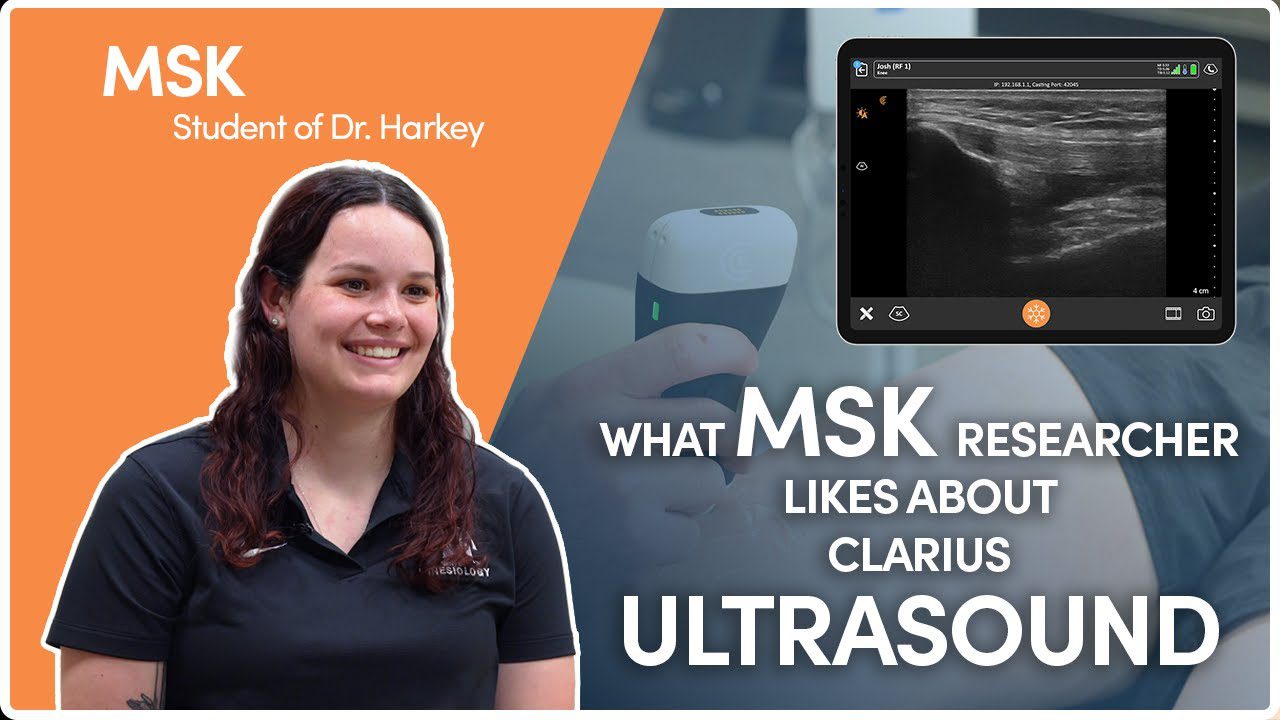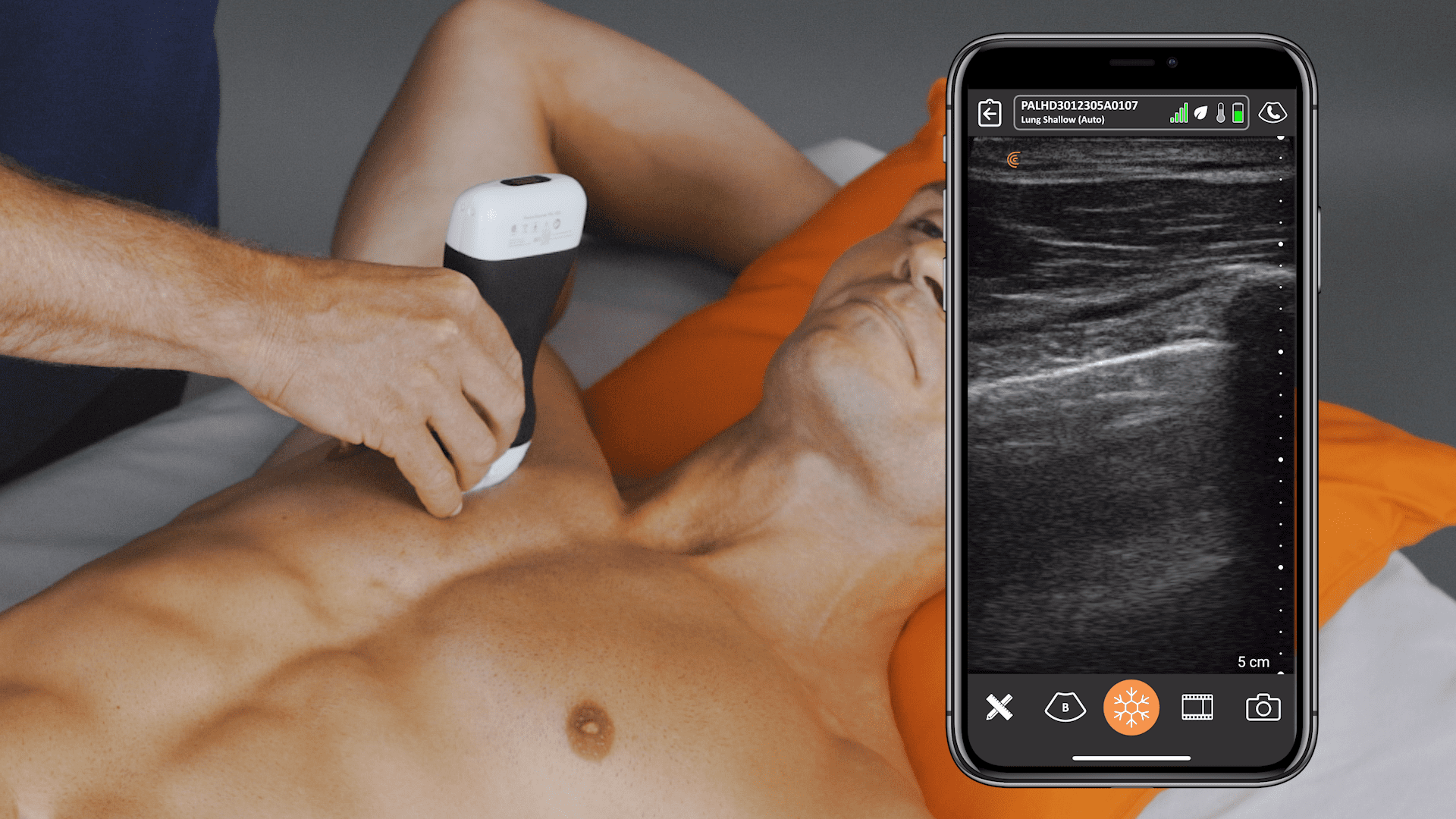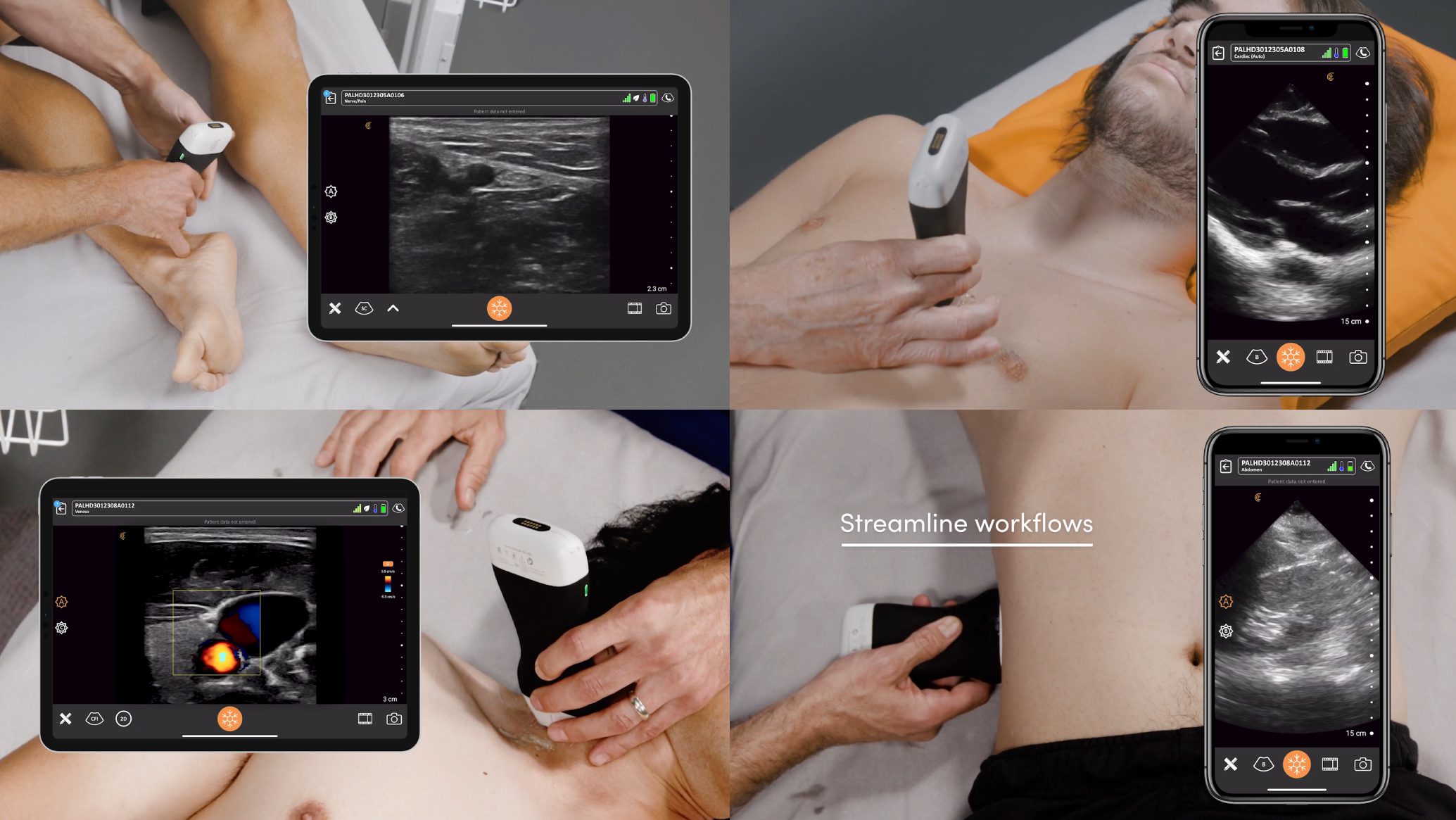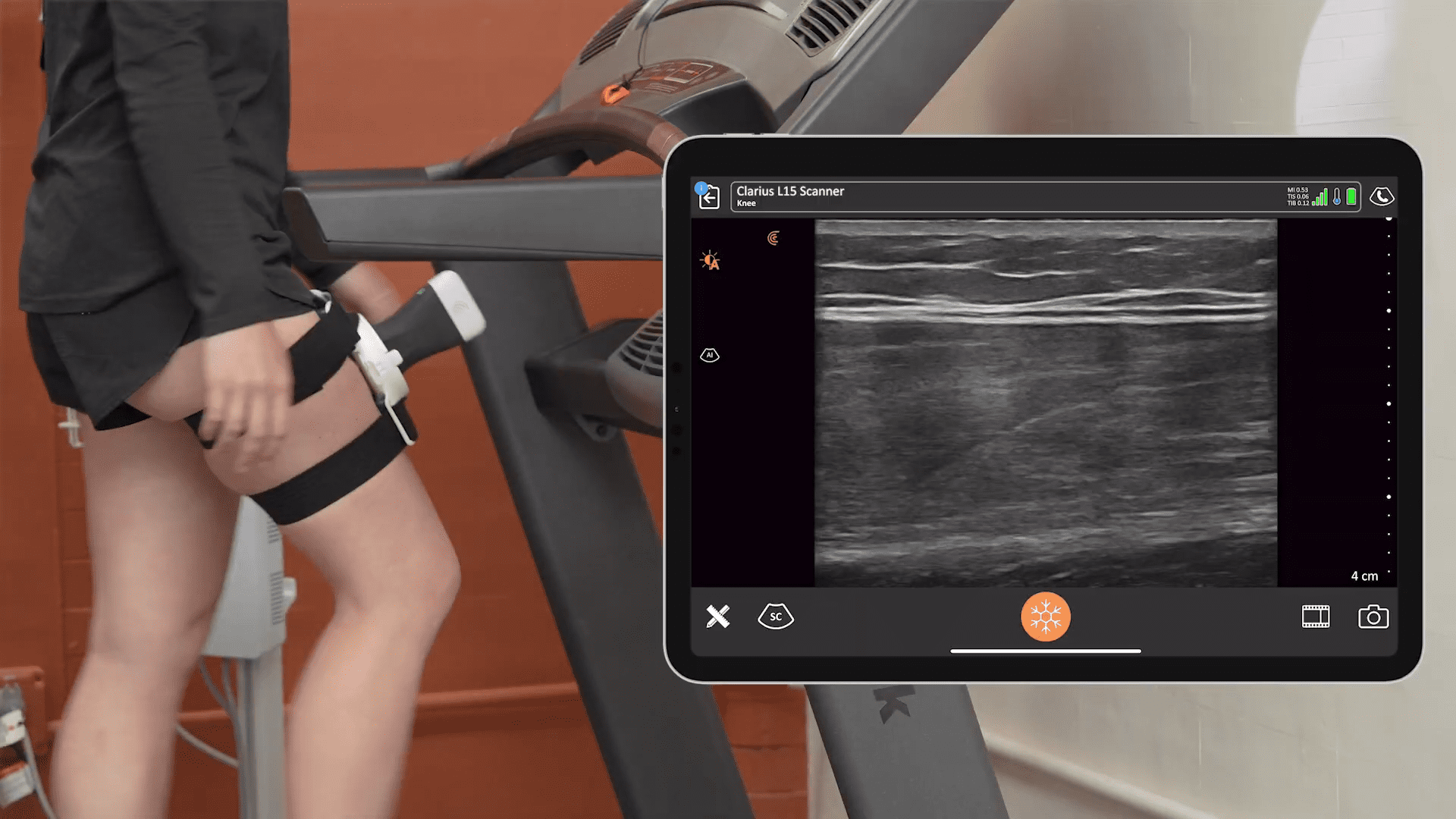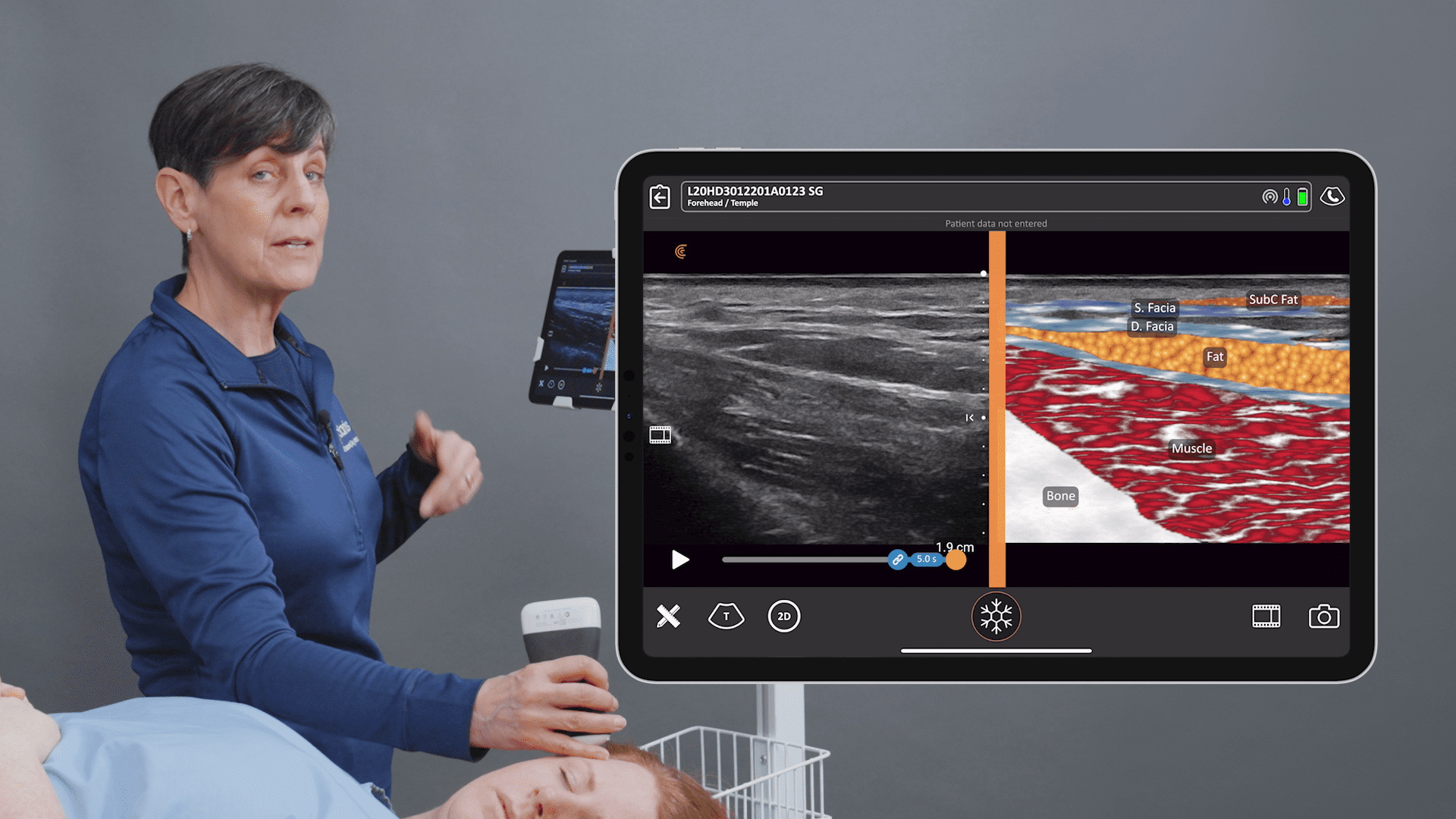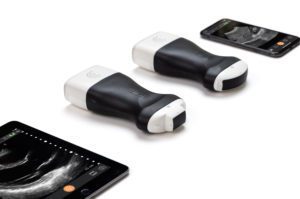We recently caught up with Dr. Kevin Zorn at the American Urology Association (AUA) meeting in Chicago to discuss his practice. Dr. Zorn is a urologist who started off his practice at the University of Chicago before moving to Montreal to head the BPH and Robotics Program at the University of Montreal. He is very outspoken about how physicians, healthcare systems, and most importantly, patients benefit from having wireless handheld ultrasound systems at the point-of-care.
How does ultrasound play a role in your practice?
We’ve incorporated the urological use of ultrasound in urology rather than sending patients to radiologists and then having the patient come back for secondary visits. Personally, I’ve used the Clarius device for over a year and a half, and I have been able to do over 600 ultrasound examinations within my practice. The use of ultrasound greatly improves our ability to stratify patients based on their prostate size, volume, and configuration for different types of treatments which have become available in the last few years and are dependent on the ultrasound findings.

How did you adapt to handheld ultrasound?
Having initially started with the hands-on course here at the AUA on predominantly larger cart-based systems for ultrasound certification accreditation, it was very easy to integrate ultrasound into my practice, especially something that is wireless, transportable, and very easy to operate, with the interface being my phone. The systems we trained on were very heavy expensive devices which were usually kept in one room and not easily transportable to different areas of the practice.
The training included limited retroperitoneal, kidney, ureter, bladder, prostate, scrotum, testes and penis imaging. These are the typical organs that we as urologist are confined to do. With the wireless technology, I am able to image in situations like the emergency room or operating room where a cart-based system is not available
The Clarius device, to me, provides if not as good, perhaps better image resolution and auto contrast abilities that allow me to make an accurate diagnosis and offer quick care to my patients.
What other benefits do you see to handheld ultrasound?
The simplicity of the device gives accessibility to residents. With the Clarius system, I can bring it in one room and allow my residents to do several cases and then bring it to another, rather than being confined in a single room. I definitely think it is an attractive reproducible cost-efficient type of technology for education. My residents who have seen how easy it is are very eager and keen to adopt this technology into their practice. I mean, just like iPads for young kids who have adopted it early and are much more facile than we would have ever been, ultrasound is the same for these residents. With the fact that it’s safe and it’s cheap compared to all the other imaging technologies, there is no downside to having this technology by their side. I think the more experience and number of hours you can spend practicing getting a feel, understanding the intricacies of ultrasound at an earlier age, the better. I would love to see this be integrated into medical school during the universal training of every medical doctor.
Can you describe your ultrasound toolkit?

The Clarius C3 curved scanner is my workload workhorse device for the abdomen, bladder, prostate, and kidney.
- Within the kidney, we can look for any mass, stone or hydronephrosis.
- The ureter for any stone or dilation.
- The bladder to see if there is any tumor, thickening of the wall, diverticula or stone. In our Canadian system, the C3 scanner is cheaper and can do much more than your standard bladder scanner.
- It can also be used for the prostate to measure its dimensions, the presence of a median lobe, his vascularity and if there is any calcification.
The L7 linear scanner in urology is mostly used for the scrotum. Within the scrotum, there are not a lot of contrasting organs and therefore I’ve been able to save patients who have hernias, hydroceles, traumas or tumors a lot of time by quickly and accurately understanding what the diagnosis is and delivering them much faster care.
My newest scanner is the EC7 endocavity device which has utility for transrectal ultrasound imaging both of the prostate and the seminal vesicle and any uro-gynecological examinations.
I purchased the premium package which includes color Doppler, resistive index and power Doppler. These are features that are typically associated with the bigger powerful systems, so I am not only able to assess the anatomy but also understand the vascularity and other components of the anatomy to deliver better care.
Can you describe the process for the patient in more detail?
In the Canadian Healthcare System, patients will sometimes wait months before getting an appointment for an ultrasound and then sometimes another two to four weeks before the report is generated and sent to the referring physician. Some physicians will get around the issue of ultrasound wait times by ordering a CT scan for patients with suspected hematuria and therefore needlessly exposing the patient to radiation and contrast. Potentially avoiding radiation and contrast agents and bypassing imaging wait times with hands-on ultrasound technology is the biggest saving gained for the patient.
In the early days, there were some of my colleagues who had suggested that by doing my own ultrasound on the penis and scrotum, I may possibly miss a diagnosis. My response to that concern is that I have done numerous hours and training of accredited ultrasound courses, which I think is very important. Moreover, one must ask how many ultrasounds do we order for patients who don’t return for their follow-ups and to which we are legally responsible to make sure we deliver the findings? I have heard of patients where they have had an ultrasound done and found a kidney mass, and they didn’t come back for the follow-up and there were repercussions to the urologist who had ordered the ultrasound.
I am in independent control because I am performing the exam on the spot. If I am not comfortable with my findings, then I send the patient off for further investigation by a radiologist for a more accurate anatomic CT or MRI. Most importantly for me is that I am the one responsible to deliver the fastest and most effective safe care to my patient.
Outside of the initial purchase of the scanner, it doesn’t really cost me more than gel and energy to recharge the batteries. If you consider the cost to the patient (after leaving a consultation, visiting a radiologist and returning for a follow-up) and the cost to the healthcare system, the additional cost to my practice is well worth the initial purchase of a system like this.
Where do you see the future of urology with the incorporation of ultrasound?
The ultrasound has been an extension beyond our five senses to evaluate the patients and provide better bedside care. This should become the standard of care across the urological practice to quickly and accurately assess patients. The integration of basic artificial intelligence technology is already available to help determine the gain and depth. Integration with our electronic medical records to have colleagues instantly review a diagnosis if there is any doubt accelerates the time from diagnoses to treatment for each patient.
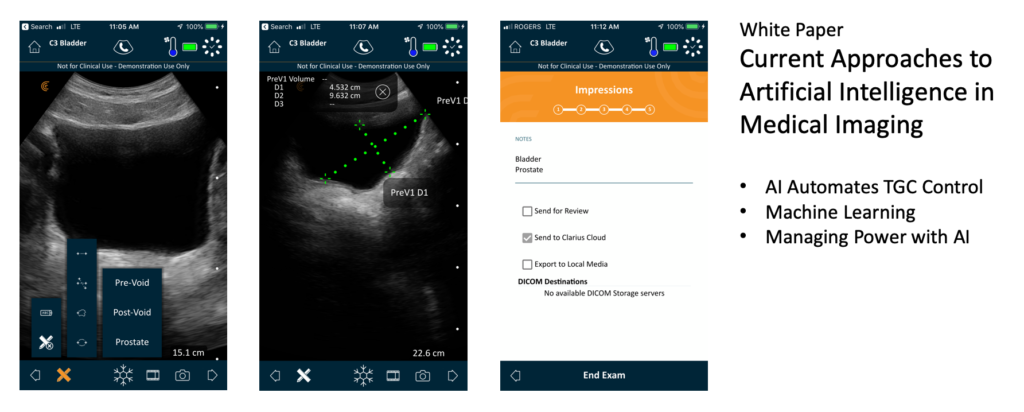
Beyond the wireless technology that Clarius provides, I’m excited for more advanced artificial intelligence. We already see it in a number of other surgical platforms. Seeing it advance on ultrasound is the next step to allow the urologist or the user to have some assistance in identifying anatomy and to help measure predetermined organs. I think it definitely will add to the safety and efficiency of ultrasound.
Any last words?
Clarius and point-of-care ultrasound allow urologists to be more accurate and timely, and deliver improved office or surgical-based care. This small, portable, and completely wireless scanner allows me up to two hours of access to any point in the hospital or beyond, all done through my phone or tablet. The fact that we can share the case with other colleagues during our own training and teaching affords better patient care in our practice. The system is HIPAA-secure and EMR-compatible to allow billing through CMS and a standardized reporting system.
It’s the handheld ultrasound that is going to become the new stethoscope of the 21st century. It takes what we have in our current armamentarium from our auditory listening with a stethoscope and the tactile limitation of the distance of my fingertip to something way beyond. Without a doubt, I think the ultrasound and the Clarius system allows us to be better urologists.
For more information on how ultrasound can benefit your urological practice, check out our ultrasound for urology page. To learn about specific cases that Dr. Kevin Zorn has encountered with the Clarius Ultrasound Scanner, watch the video below:


